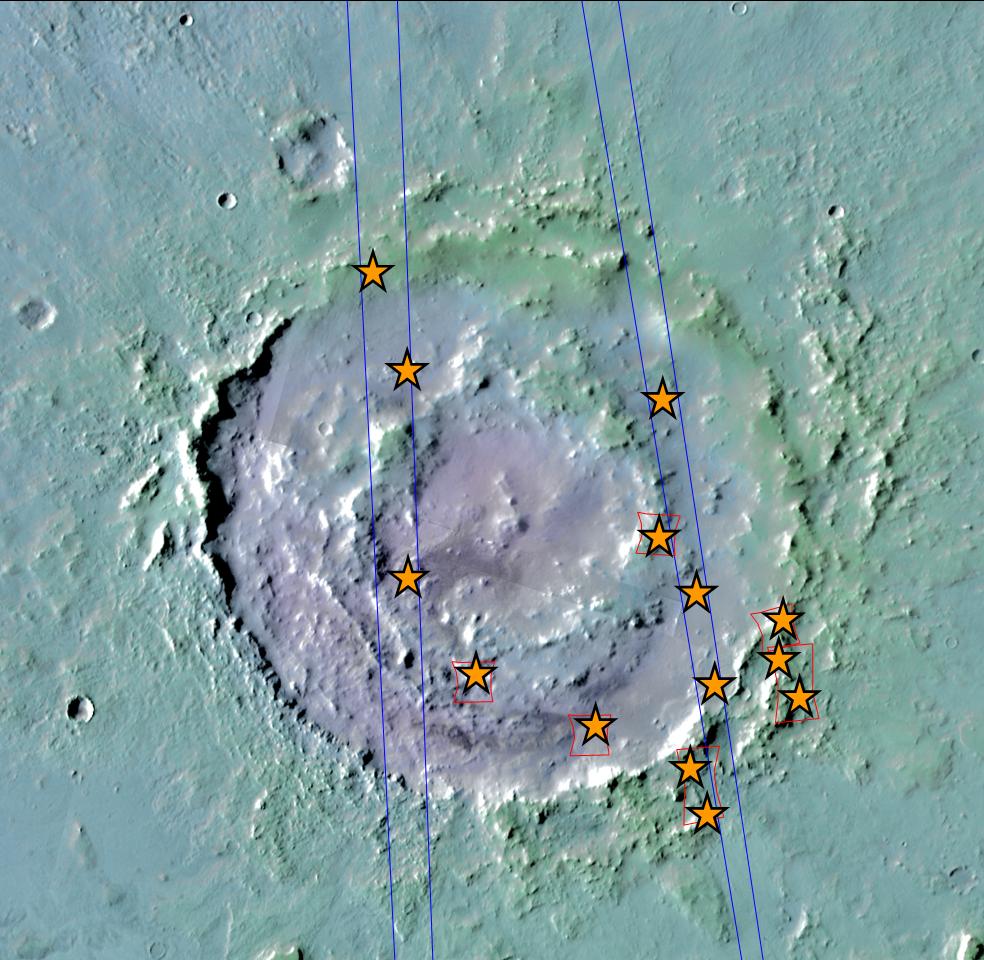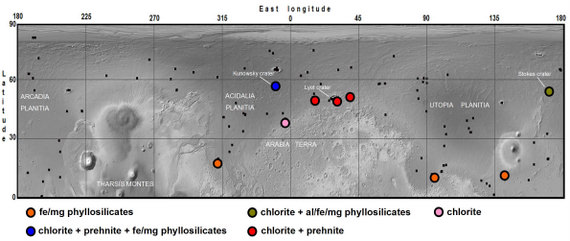NASA JPL | 2010-209 | 24 June 2010
Water Was Widespread Across Early Mars, But No OceansMinerals in northern Mars craters seen by two orbiters suggest that a phase in Mars' early history with conditions favorable to life occurred globally, not just in the south.
Southern and northern Mars differ in many ways, so the extent to which they shared ancient environments has been open to question.
In recent years, the European Space Agency's Mars Express orbiter and NASA's Mars Reconnaissance Orbiter have found clay minerals that are signatures of a wet environment at thousands of sites in the southern highlands of Mars, where rocks on or near the surface are about four billion years old. Until this week, no sites with those minerals had been reported in the northern lowlands, where younger volcanic activity has buried the older surface more deeply.
French and American researchers report in the journal Science this week that some large craters penetrating younger, overlying rocks in the northern lowlands expose similar mineral clues to ancient wet conditions.
"We can now say that the planet was altered on a global scale by liquid water about four billion years ago," said John Carter of the University of Paris, the report's lead author.
Other types of evidence about liquid water in later epochs on Mars tend to point to shorter durations of wet conditions or water that was more acidic or salty.
Universe Today | 24 June 2010
Detection of Hydrated Silicates in Crustal Outcrops in the Northern Plains of MarsBy looking at the mineralogy deep inside craters on Mars' northern plains and comparing it to the makeup of regions in the southern hemisphere, scientists have found that widespread liquid water likely altered the Red Planet's crust about 4 billion years ago. However, the new findings do not support other recent studies that a giant ocean covered Mars' northern highlands. Using the Mars Express OMEGA instrument and the Mars Reconnaissance Orbiter's CRISM instrument, John Carter from Bibring at Université Paris in Orsay, France and a group of scientists from France and the US investigated large craters, and found minerals which could have only formed in the presence of water. "We've detected hydrated minerals in about 10 of these craters," Carter told Universe Today, "and we conclude that the ancient crust was altered in a similar way both in the south and in the north, in a very early environment which was much warmer and wetter than today's."
Carter added that in terms of Mars' water history, this means that liquid water existed near and on the surface of early Mars on a planetary scale, and is not restricted to select areas of the southern highlands.
- Science, Vol 328 No 5986, 25 June 2010, DOI: 10.1126/science.1189013

